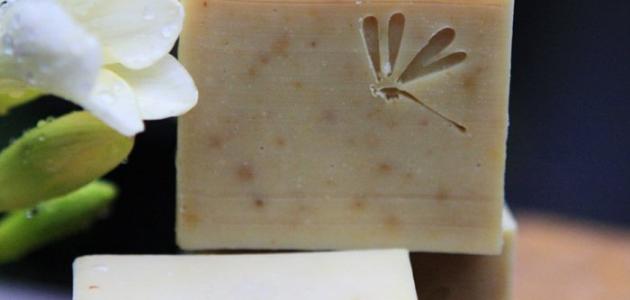How to make soap
 |
| How to make soap |
Soap
Soap is a product used for cleaning. Soap is prepared chemically from sodium or potassium salts resulting from the breakdown of fats in a chemical reaction called saponification. Soap's cleaning effectiveness is due to the fact that it acts as an emulsifier that binds to dirt and oils, and transforms them into a form that can be disposed of when rinsing with water. There are many forms and types of soap available in the market, and their quality differs from one product to another, and in order to obtain good quality of it at a somewhat inexpensive cost, it is advisable to manufacture it at home, and prefer aromatic scents can be added to it, and in this article the steps for making soap will be identified, and the precautions to be taken before Start manufacturing it at home. [1]
How to make soap
Soap can be made at home, by carefully following the following steps: [2]
Providing the necessary materials for the manufacture of soap, namely:
24 ounces (680.4 grams) of olive oil and a similar amount of coconut oil.
38 ounces (1 kg approximately) of vegetable fat.
12 ounces (340.2 grams) of sodium hydroxide, also known as caustic soda.
32 ounces (approximately 907.1 grams) of distilled water.
4 ounces (approximately 113.4 grams) of essential oil to taste, such as mint, lemon, rose, or lavender.
Put cold water in a glass or stainless steel container.
Sodium hydroxide is added to the water slowly and carefully, stirring gently until the sodium hydroxide dissolves, and this step is preferable to take place under a kitchen air hood, and for the place to be well ventilated, and to avoid inhaling the fumes resulting from the reaction.
Leave the mixture to cool and the vapors disappear. Because the reaction will cause the water to heat up.
A stainless steel bowl is placed on a low to medium heat stove, and coconut oil and vegetable fat are added, stirred until the mixture melts, then olive oil is added and stirred until the materials dissolve and are completely homogeneous, then remove the bowl from the fire.
Monitor the temperature of the water and hydroxide mixture until it is between 35-36 degrees Celsius, as well as the mixture of oils until it reaches a similar or lower temperature, taking care to use a different scale for each mixture.
Adding the mixture of sodium hydroxide and water to the oils gradually, with stirring with a heat-resistant spoon for a period ranging between 10-15 minutes until the mixture becomes firm, and if it does not solidify after a quarter of an hour, it is left to settle a little for a period of 10-15 minutes before continuing to mix again The mixing stick can be used to save time. It only needs five minutes of stirring.
Aromatic oil is added to the mixture, and poured directly into molds after lining them with baking parchment paper, then the mold is raised by an inch or two and left to fall, and this step is repeated several times to get rid of the air bubbles that are found in the raw soap.
Cover the molds with hardened cardboard, then wrap them with towels to isolate them, to allow the saponification process to take place, and leave them away from air currents for 24 hours, then remove the cover and leave for an additional 12 hours.
Still light layer - like white ash which is made up on the surface of soap, and you should not use soap in the following cases:
The presence of a thin layer of a dark oily substance, and this can happen for several reasons, including: an inaccuracy in the weight of the materials, or failure to stir for a long enough time, or a large difference in the temperature of both sodium hydroxide and oils when mixed together.
The absence of saponification from the base, or the presence of white or transparent cavities, due to lack of movement during the soap-making process.
Take the soap out of the mold, by turning it over on a towel or clean surface, and cutting it into pieces of the desired size using a sharp knife, fishing line, or heavy nylon strings.
The soap is placed on parchment paper, left on a flat surface to dry and the saponification process is completed for a period of two weeks, then turned over and left to dry on the second side in a well-ventilated place for at least a month, then it can be used as a completely commercial soap.
Safety tips when making soap
One of the substances used in the manufacture of soap is sodium hydroxide solution (in English: Lye), which is a caustic substance that may cause damage to the skin and the materials used in the manufacture of soap; Therefore, you must adhere to safety instructions, and make sure that everyone in the house adheres to them; To ensure that it is not exposed to danger during home manufacture, and among these instructions are the following: [3]
Wearing rubber, latex, or plastic gloves while working; To protect hands.
Wearing safety glasses to protect the eyes from all sides.
Wearing clothes that cover all parts of the body; To prevent skin burns .
Choose a well-ventilated place during the manufacture of soap, and the fan can be used when needed, and open cans of sodium hydroxide solution must be stored in well-ventilated places upon completion of work, and make sure everyone knows that there are alkaline substances in that place.
Make sure to use utensils designated for making soap, not to use these utensils for cooking or eating food, and to make sure that everyone in the house adheres to that.
Adding the sodium hydroxide solution to the water gradually and not vice versa; Because adding water to the sodium hydroxide solution causes a rapid reaction, and the hydroxide solution explodes.
Use utensils made of stainless steel, or heat-resistant glass and plastic, and avoid using aluminum utensils; Because it will interact with the sodium hydroxide solution, and lead to the release of harmful fumes, and may damage the soap, and wooden stirrers should not be used; Because it will break shortly after use, and its shrapnel will appear in the soap.
Keep the sodium hydroxide solution and the newly made soap out of the reach of children and pets.
first aid
The following are the most important first aid that you should know before starting to make soap : [3]
When contacting the sodium hydroxide solution with the eyes, you must remove the contact lenses if they are present, wash the eyes with cold water for fifteen minutes, and contact the emergency medical services to seek help after that.
When swallowing sodium hydroxide or newly made soap , drink water from the tap, and not try to vomit, and the emergency medical services and poison control center in the area must be called immediately, and it is preferable to search for a number of poison control centers near the place of residence before starting the manufacturing process Soap.
When touching the sodium hydroxide solution to any part of the body, the clothes that cover it are removed, and the affected area is washed under cold water for a period of fifteen minutes.
References
↑ Anne Helmenstine. (30-6-2017), "How Does Soap Work?" , Www.thoughtco.com , Retrieved 25-11-2017. Edited.
↑ "How to Make Your Own Soap" , www.wikihow.com , Retrieved 23-11-2017. Edited.
^ A b "How To To the Make Bar of Soap" , Www.wikihow.com , Retrieved 25-11-2017. Edited.


Comments
Post a Comment